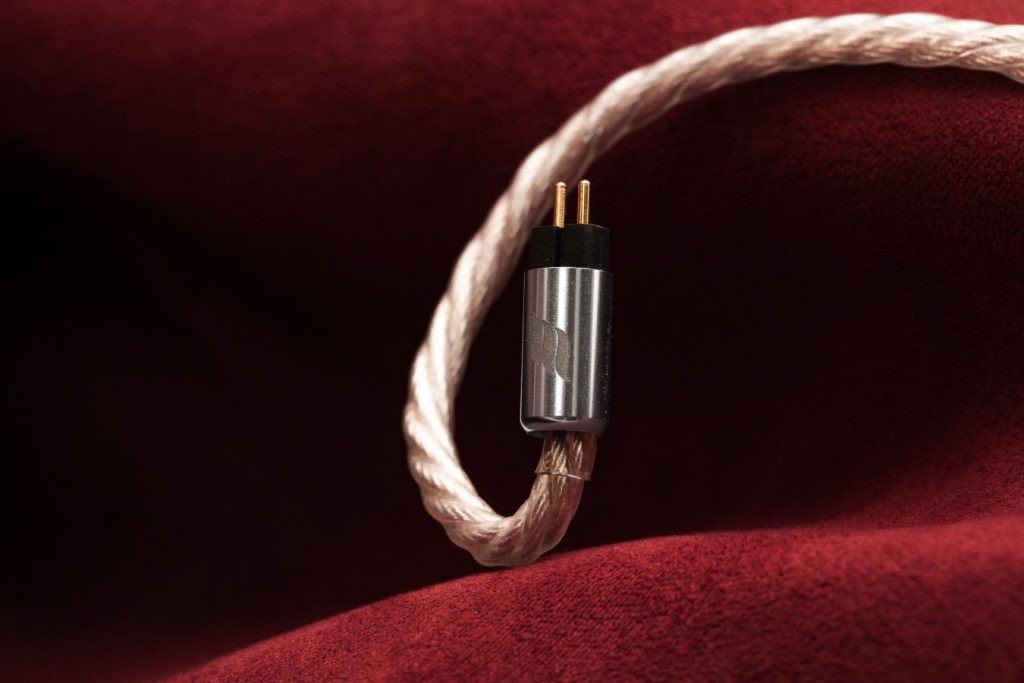Sound Impressions
Post-mod, the Leonidas II has shifted in ways I did not expect. Rather than amplify the refinement, openness and air established in the default config, the Octa variant instead doubles down on the cable’s fun factor. Increases in mid-bass content, midrange oomph and overall dynamic range have resulted in a conductor that sounds rhythmic, kinetic and – most of all – tactile. There’s a punchiness and physicality to instruments to the point where you almost feel the pressure of drum hits, horn shouts, piano strikes and more. Listening to Snarky Puppy’s Xavi at very normal listening volumes, you almost wince as the bongos and tom-toms come in because of how real those hits feel – in a positive way, of course.

But, that’s not to say the Leonidas II has entirely abandoned its finesse either. The entire soundscape permeates with air, accompanied by sublime layering. Despite the size and activity of the images within, the Octa still manages to keep everything in check. Now, the increase in saturation does impede it from the same effortlessness that the original variant had. Effectively, it loosens its reins a bit for the sake of fun. Nevertheless, the added headroom that the Octa provides does give Effect Audio the room to do this. Stereo spread has improved. The stage feels taller; more grand. Behind all the energy, micro-details still breathe with impressive space. So when the dynamics kick in, it’s much more substantive than simply everything but louder. It’s energy with purpose; charisma with technique; play with finesse.
Down low, the Octa has taken advantage of the added headroom and elevated the bass in oomph and scale. Those distant waves I referred to in my original review travel closer toward the forefront, maintaining strong dynamism and height all the while. The Octa by no means emphasises the bass, but it does add a tactile physicality which contributes towards impact. In the process, the mid-bass does get a touch softer. Instruments sound a hair thicker with greater harmonic content. And, this renders instruments like kick drums sounding a touch wetter. Does the low-end then lose a touch of definition? Not necessarily. The Octa’s vast, extended treble does a marvellous job maintaining clarity down to the low-end. But, if you like your low-ends tighter and more compact, the original Leonidas II may be the one you’re after. But, if you want that added dose of power and slam without sacrificing transparency, the Octa has it in spades.

Despite the uptick in energy, the Octa continues to perform in the midrange – taking the Leonidas II’s balance between organicity and micro-dynamic energy to greater heights. The lower-mids are key to the Octa’s impressive instrumental timbre. The cable places equal amounts of focus toward both the transient and body, resulting in a life-like rendition of instruments that comes across effortlessly. The added liveliness has introduced neither awkwardness nor congestion nor chestiness, and much of that has to do with the speed of the midrange too. It’s a natural elevation that perfectly complements the ensemble without overstaying its welcome. The depth that the Octa adds has made micro-dynamic energy more outstanding as well. Tiny nuances flicker with convincing presence; neither falsely projected nor detachedly distant. This is perhaps where the Octa succeeds most – taking the Leonidas II’s greatest hits and giving ’em a remaster.
The Octa’s top-end is a breeze to listen to. Articulation and detail come through effortlessly, surpassing the original in refinement, stability and speed. Transients sound more timbre-full and textured. Again, there’s a tactility that fleshes them out beyond just tick‘s and tack‘s. Perfectly paired with this is heightened headroom. More black space surrounds each element for a more spacious image. Of course, when listening to fuller genres of music, the energy downstream does quickly occupy the area. But again, the space never gets too crowded. And, with tracks that build layer by layer – like Snarky Puppy’s Jefe or Mariah Carey’s When You Believe – you experience the drama that takes place as the song gains momentum and climaxes in a marvellous crescendo. Admittedly then, the degrees of improvement gained here are rather situational. But with the ideal pairs, the Octa gives you tons of space to take advantage of no matter what.
Suggested Pairings

Dynamic energy with headroom to match: The Octa boosts macro-dynamic impact and spaciousness in equal measure. So, you get a livelier response without the compromise of congestion, saturation, etc. This is ideal if you have a relaxed, laid-back monitor that you’d like to inject some energy and punch into, like the Vision Ears VE6XC or the Jomo Audio Haka.
A neutral, yet full-bodied tonality: Both variants of the Leonidas II are unique in that they are clear and organic-sounding at the same time – liquidity paired with openness and air. Octa takes this a step further with a fuller harmonic response and superior instrumental texture. Similarly-minded in-ears like the Empire Ears Zeus will benefit from this splendidly.
Transparency and micro-detail retrieval: Despite its overall energy, the Octa delivers heaps of resolution and holography. Clarity, micro-dynamic energy and layering all impress even with the Octa’s thicker timbre. This is ideal for warmer or darker in-ears like the Empire Ears Phantom or Custom Art FIBAE Black, in order to draw nuance more effortlessly.

A cleaner, leaner response: Unlike most 8-wire cables, the Octa boosts power and impact as much as it does headroom. The soundscape does expand, but it’s fuller as well. Effect Audio’s Horus is the more ideal conductor for these qualities.
Compact and laid-back instruments: The Octa differs from the Leonidas II in note size and projection. There’s an almost larger-than-life scale and impact to instruments. Effect Audio’s Janus Dynamic is better suited towards calm refinement.
An exaggerated sense of spaciousness: Again, despite the headroom Octa generates, an uptick in energy is present too. Although the stage itself is expansive, there’s a vibrance to instruments that hinders an exaggeratedly operatic scale. Again, if a more distant, mellow and vast sound is what you’re looking for, Effect Audio’s Janus Dynamic is more ideal.




One Response
Sound criticism (otherwise called the Larsen impact after the Danish researcher, Søren Larsen, who initially found its standards) is a unique sort of positive input which happens when a sound circle exists between a sound contribution (for instance, a receiver or guitar pickup) and a sound yield (for instance, an amplifier).